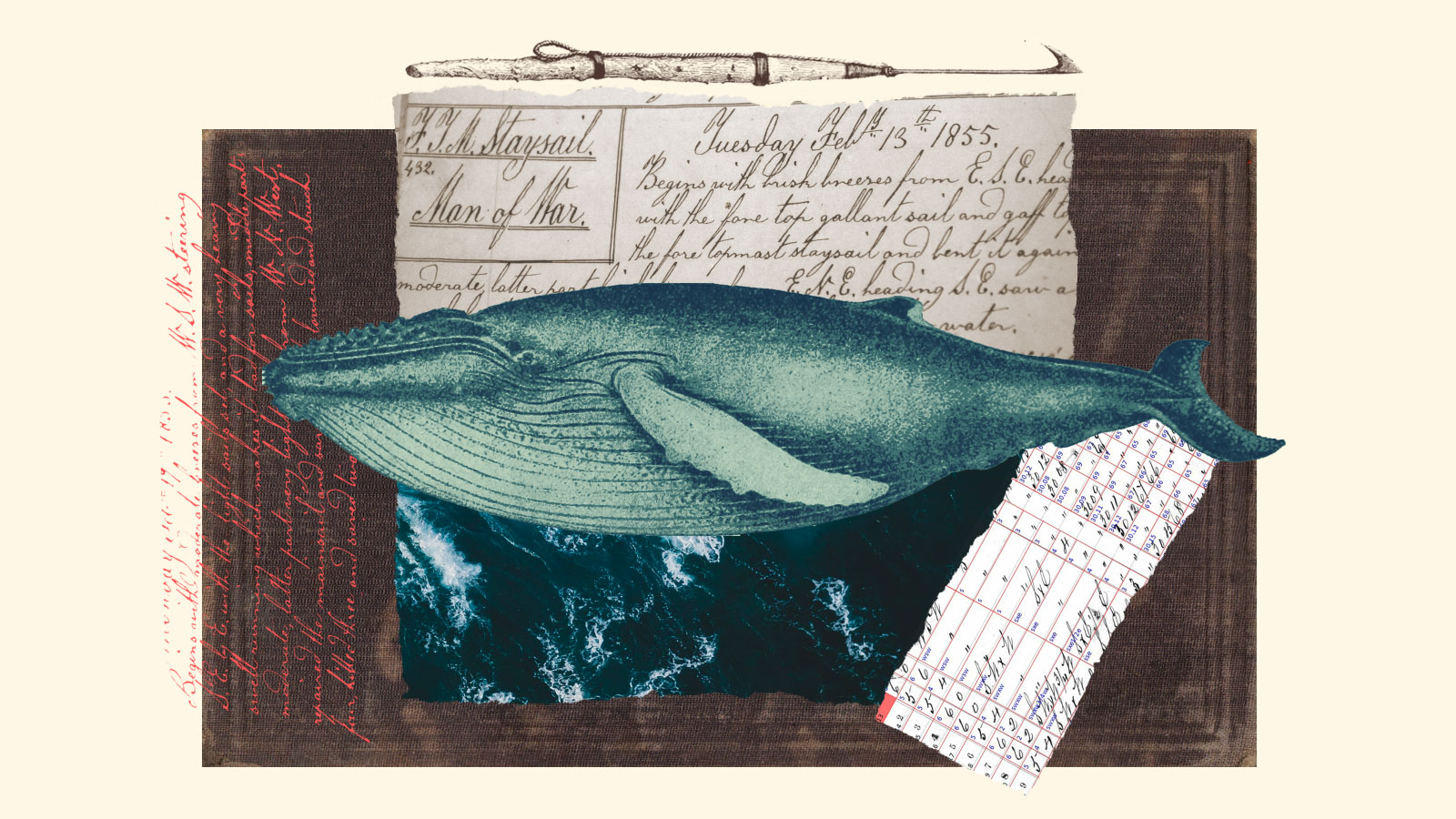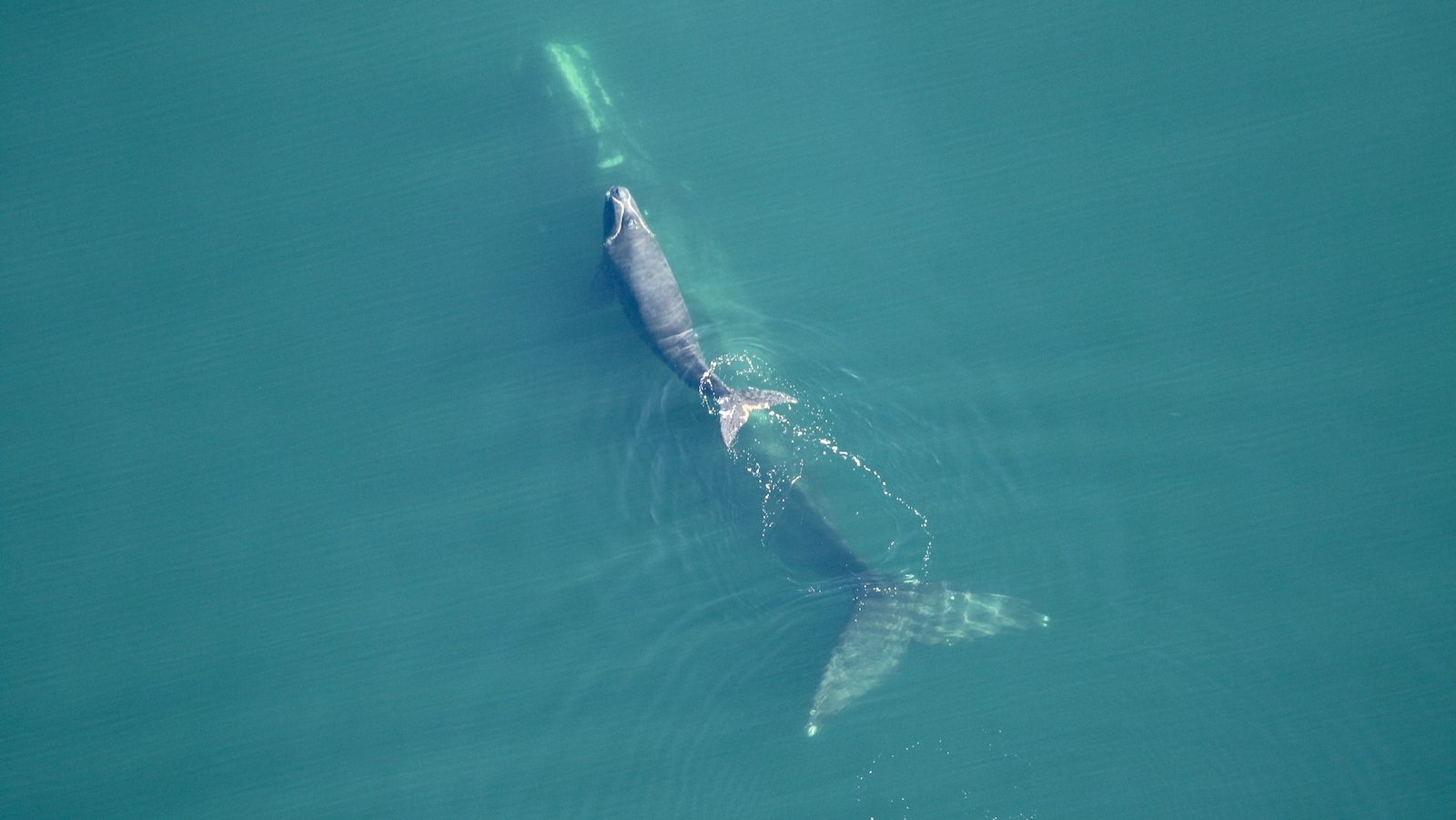This coverage is made possible through a partnership with WABE and Grist, a nonprofit, independent media organization dedicated to telling stories of climate solutions and a just future.
Amid a difficult year for North Atlantic right whales, a proposed rule to help protect them is one step closer to reality.
Earlier this month, a proposal to expand speed limits for boats – one of the leading causes of death for the endangered whales – took a key step forward: it’s now under review by the White House Office of Information and Regulatory Affairs, the last stage of federal review.
Fewer than 360 of the whales remain; only about 70 of them are females of reproductive age. Every individual whale is considered vital to the species’ survival, but since 2017 right whales have been experiencing what scientists call an Unusual Mortality Event, during which 39 whales have died.
Human actions — including climate change — are killing them.
When the cause of a right whale’s death can be determined, it is most often a strike by a boat or entanglement in fishing gear. Three young whales have been found dead this year, two of them with wounds from boat strikes and the third entangled. One of the whales killed by a boat was a calf just a few months old.
Climate change, meanwhile, has disrupted their food supply, driving down right whale birth rates and pushing them into territories without rules in place to protect them.
“Our impacts are so great right now that the risk of extinction is very real,” said Jessica Redfern, associate vice president of ocean conservation at the New England Aquarium. “To be able to save the species, we have to stop our direct human-caused impacts on the population.”
This is not the first time humans have driven North Atlantic right whales to the brink of extinction.
Their name comes from whaling: they were known as the “right whale” to hunt because they spend time relatively close to coastlines, often swimming slowly and near the surface, and they float when dead. They also yielded large amounts of the oil and baleen whalers were after. So humans hunted them to near-extinction until it was banned in 1935.
Many of those same characteristics are what make right whales so vulnerable to human dangers today. Because they’re often near the surface in the same waters frequented by fishing boats, harbor pilots, and shipping vessels headed into port, it’s easy for boats to collide with them.
“They’ve been called an urban whale,” said Redfern. “They swim in waters that humans are using; they have high overlap with humans.”
Florida Fish and Wildlife Conservation / NOAA #24359
To reduce the risk of vessel strikes, ships over 65 feet long have to slow down during set times of year when the whales are likely to be around. In the Southeast, the speed limits are in force during the winter when the whales are calving; off New England, the restrictions are in place in the spring and summer when they’re feeding. Regulators can also declare voluntary speed restrictions in localized spots if whales are seen, known as dynamic management areas.
The National Oceanic and Atmospheric Administration in 2022 proposed expanding those restrictions in three ways.
First, the new rule would cover larger geographical areas. The protection zones would extend down the coast from Massachusetts into Florida at various times of year, instead of only applying in certain distinct areas.
Second, the change would apply the speed limits to smaller craft like fishing boats, rather than only ships over 65 feet.
Third, the new rule would make the speed restrictions in dynamic management areas – the temporary speed limits where whales have been spotted – mandatory.
Since NOAA published and gathered feedback on the proposed rule in 2022, whale advocates have been clamoring for the agency to implement it. Those calls have increased in recent months as dead right whales have washed up on beaches.
“There have been three deaths, and that has been really devastating this year, and two of them are related to vessel strikes,” said Redfern. “It’s just highlighted that absolute urgency, the necessity of getting this rule out.”
A leading boating industry group is speaking out against the expanded speed restrictions, arguing they could hurt small businesses in the recreational boating industry.
“We are extremely disappointed and alarmed to see this economically catastrophic and deeply flawed rule proceed to these final stages,” said Frank Hugelmeyer, president and CEO of the National Marine Manufacturers Association in a statement. “The proposed rule is based on incorrect assumptions and questionable data, and fails to distinguish between large, ocean-crossing vessels and small recreational boats.”

Right whale scientists have documented in recent years that small, recreational boats can injure and kill right whales. At least four of the lethal vessel strikes since the current restrictions began in 2008 have involved boats smaller than 65 feet and thus not subject to that speed limit, according to Redfern.
NOAA estimated that, based on the size and placement of the propeller wounds, the boat that killed the months-old calf this year was between 35 and 57 feet in length – too small to fall under the existing speed restrictions, but subject to the new rule if it were to be implemented.
In his statement, Hugelmeyer also pointed to new marine technologies aimed at detecting right whales in the water to reduce vessel strikes without expanding the speed rules.
Scientists like Redfern remain skeptical, though.
The tech “offers a lot of promise,” she said, but the speed limits are proven.
“It’s really important, I think, that we rigorously evaluate the technology that’s proposed to make sure that it is going to achieve the same type of risk reduction that we see with the slowdowns in expanded areas,” she said.
Many groups, meanwhile, have raised concerns that offshore wind turbines could harm whales. There is no evidence of that, according to NOAA.




